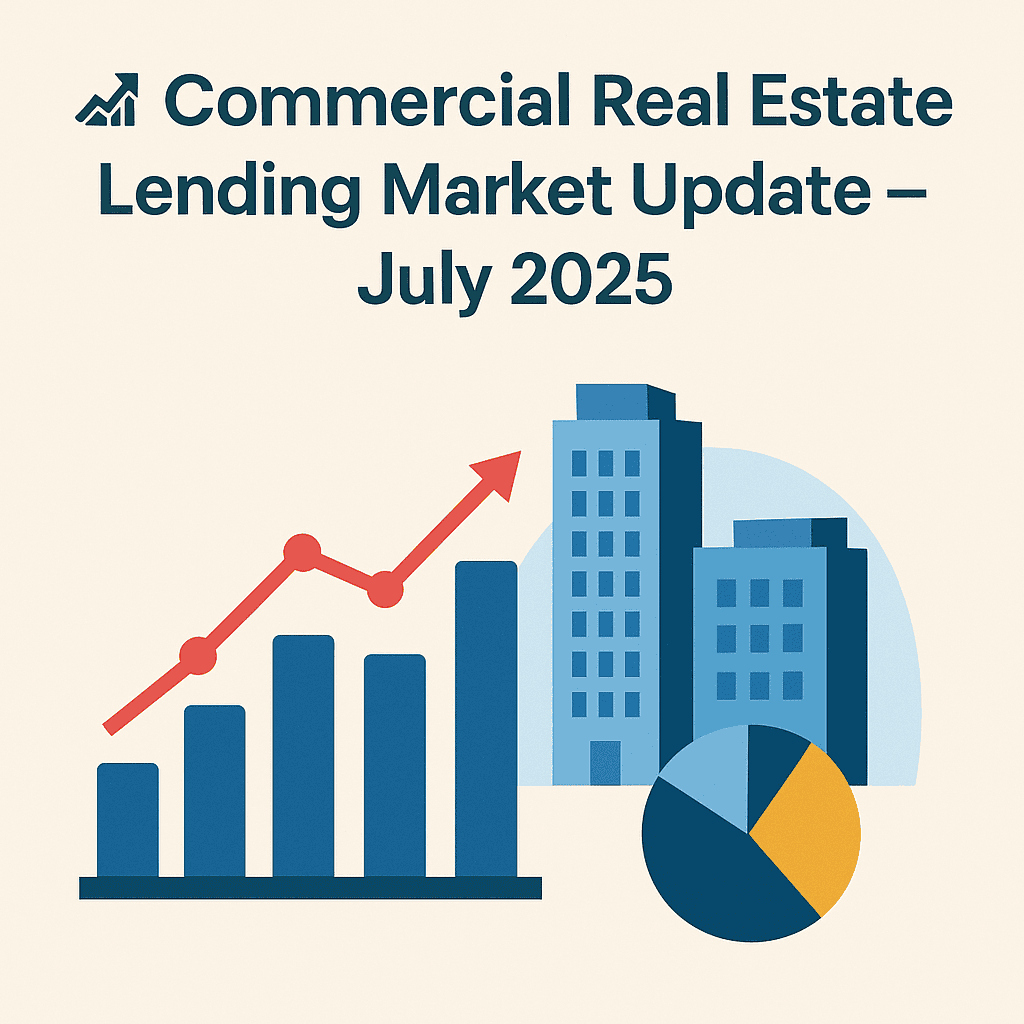
Broad Market Overview
Commercial real estate lending in the U.S. is showing resilience in a higher‑for‑longer rate environment. After a sharp spillover in 2024, many banks have pulled back, but Q1 2025 marked a pivot toward renewed lending momentum—especially from banks and private credit. Copper River Funding is well‑positioned to support borrowers requiring speed, flexibility, or asset‑based lending.
1. Delinquencies Still Elevated, but Stability Emerging
– Bank of America, CMBS, life insurers, and GSE-backed CRE lenders saw upticks in delinquencies in Q1, particularly in office and lodging sectors credaily.commba.org+1.
– CMBS loans remain the most stressed, suggesting tightening in securitized channels, while banks and GSEs maintain comparatively lower delinquency rates.
2. Lending Volume Rebounds in Q1
– CBRE’s Lending Momentum Index climbed 13% QoQ and 90% YoY, marking the highest volume since Q1 2023 credaily.com.
– Banks controlled 34% of non‑agency deals in Q1, up from 22% in Q4 2024 mba.org+5.
– However, St. Louis Fed data show slower CRE loan volume growth at banks—just 0.14% in Q4 2024, the slowest since 2013 stlouisfed.org.
3. Private Credit & Hard‑Money Lenders Step In
– Alternative lenders and private debt providers continue gaining share amid tighter regulation and higher underwriting standards for banks stlouisfed.org+15.
– Hard‑money and asset‑based lenders are increasingly filling capital gaps, particularly for time‑sensitive, value‑add, or bridge financings marketwatch.com+8.
– The “maturity wall”—nearly $1 trillion of CRE debt maturing this year—creates prime opportunity for gap‑capital providers kkr.comcentersquare.com+1.
4. Sector & Regional Divergence
– Overall transaction volume dipped: Q1 CRE deals were down ~8% YoY in count and 22% in dollar volume altusgroup.com+1.
– Despite this, average per‑square‑foot prices rose YoY in most sectors (hospitality +14.8%, multifamily +3.9%, office +3.5%) acuitykp.com+10.
– Regional variances are stark: Houston contracts across all CRE property types (–14 to –42%), while Philadelphia and Phoenix showed across‑the‑board gains altusgroup.com+1.
🔍 Insights for CRF Borrowers & Brokers
Asset‑Based & Hard Money Advantage: With traditional banks tightening credit, borrowers needing fast execution and flexible LTV structures—like fix‑and‑flip, bridge or special‑situation transactions—should consider private/hard‑money sources. CRF excels in speed, asset evaluation, and tailor‑fit structuring to seize these opportunities.
Gap‑Capital Strategy: Around $1 trillion in CRE debt is maturing this year. Borrowers caught in refinancing bind may lack traditional capital access—CRF’s expertise in gap‑financing can fill this void.
Sector Discipline: While office and retail see elevated stress, property types like multifamily and hospitality remain transactional and attractive. CRF can target steady‑cash flow assets with favorable underwriting and risk metrics.
Regional Targeting: Markets such as Houston present high stress but also higher spreads for providers. CRF can leverage local market insights, especially where traditional lenders are retreating.
📝 Conclusion
The commercial real estate lending landscape in mid‑2025 is defined by bifurcation: traditional banks maintain cautious pace with modest balance‑sheet growth, while private credit and hard‑money lenders ramp up activity across gap‑capital and time‑sensitive deals. CRF, with its speed, structural flexibility, and sector discipline, is well‑suited to support borrowers navigating this evolving terrain.


